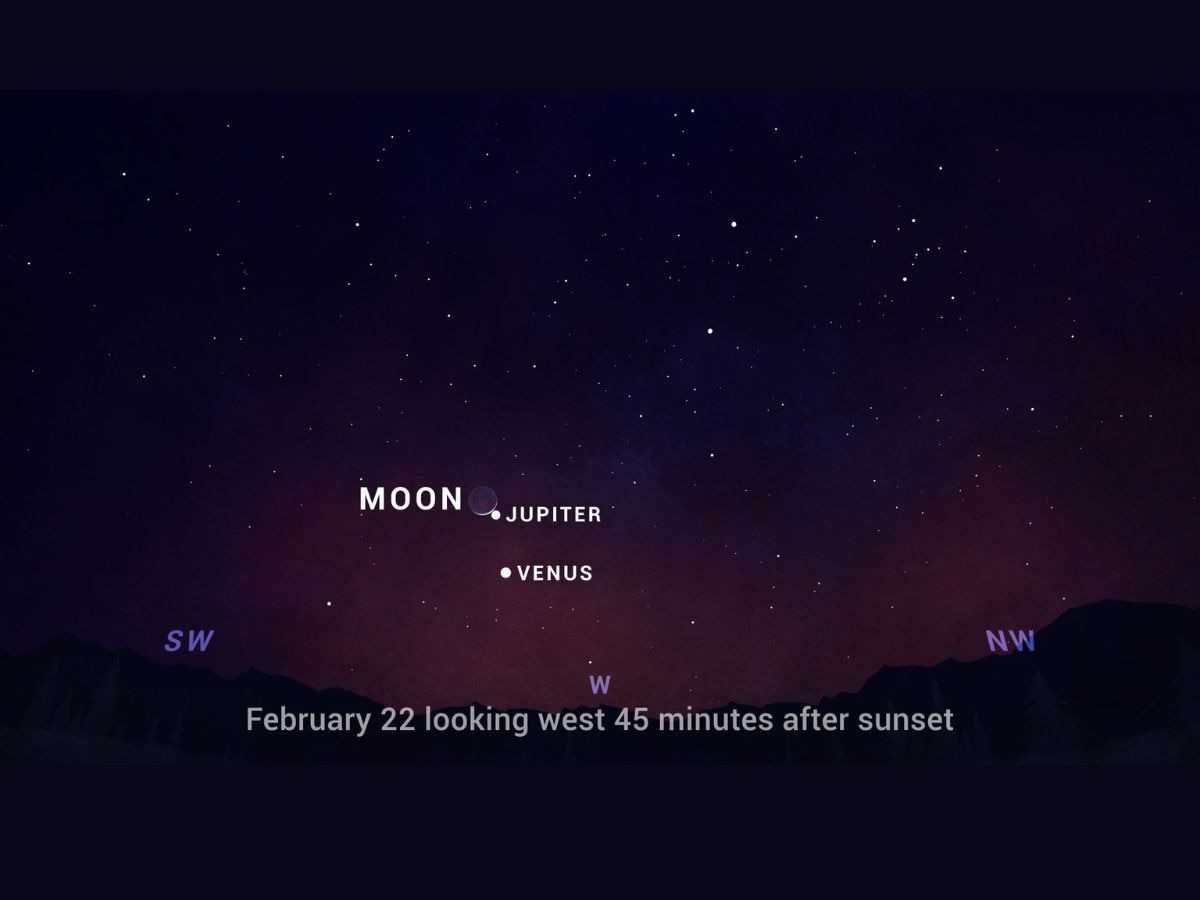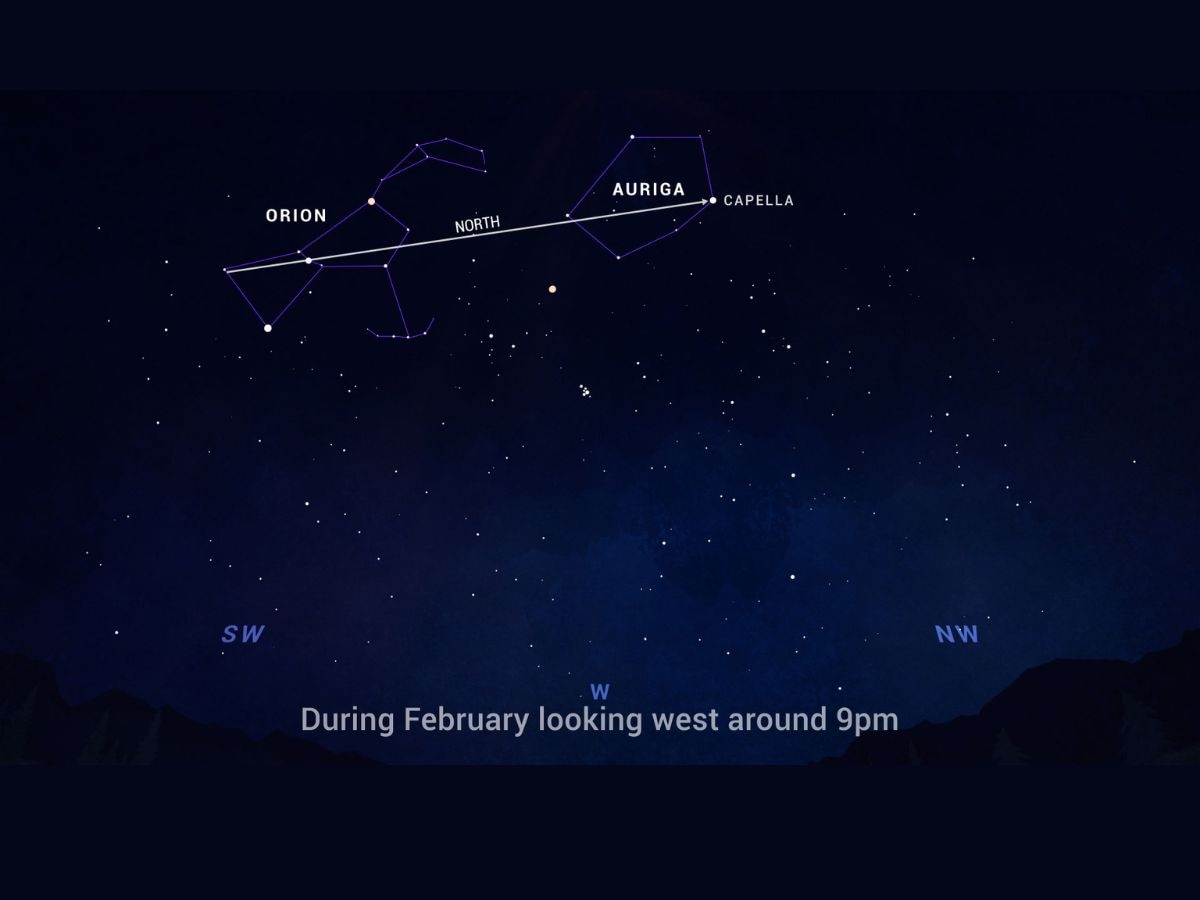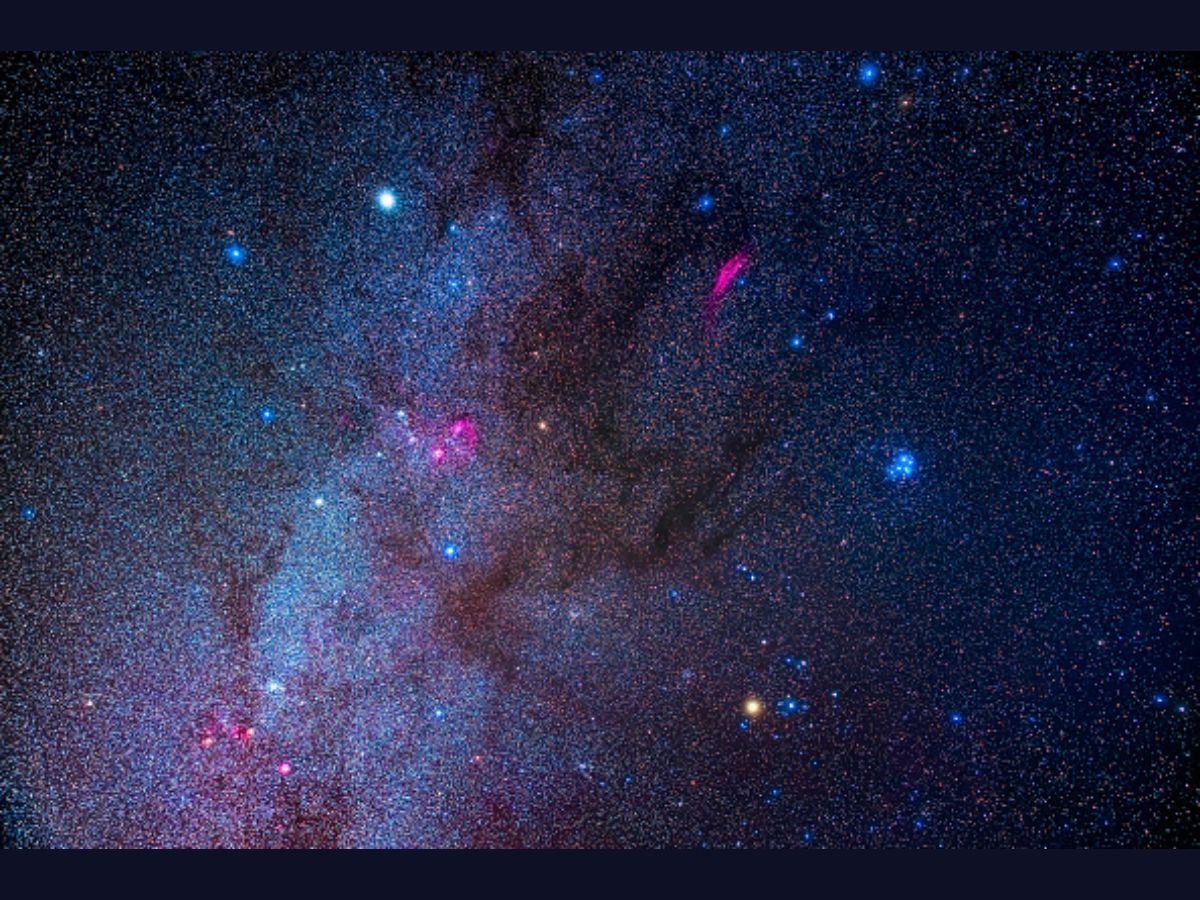Sirius, Star Clusters, Charioteer Constellation — What To Watch In The February Sky And When
The Charioteer Constellation, also known as Auriga, can be spotted in the skies the entire month. One can locate the Auriga Constellation by finding their way to its brightest star Capella.

February skywatching highlights: The February sky is full of astronomical wonders that will leave all stargazers mesmerised. Sirius, the brightest star in the night sky, the Charioteer Constellation, star clusters Messier 47 and Messier 41, and the Capella star are some of the most breathtaking cosmic marvels one can witness in the skies this month.
Here's when and where you could spot different celestial objects in the February sky.
Venus
People in India can obtain the best view of Venus right after sunset. Everyday, Venus will be visible till about 8:00 pm IST in New Delhi, for the entire month. According to timeanddate.com, the visibility of Venus will be fairly good.
Since Venus will be visible best right after sunset, one must look for the "morning star" in the west.
Jupiter and Venus will appear closer together each evening. The two planets will head for a conjunction on March 1.
Mercury
Mercury will be visible in the skies from February 7. The best view of the planet can be obtained just before sunrise. It rises in New Delhi, India's capital, at around 5:44 am IST, and sets at around 16:11 IST. However, Mercury will be slightly difficult to see.
Mars
Mars, or the Red Planet, rises at around 12:50 am IST in the skies. The Red Planet will have perfect visibility. The best view of Mars can be obtained after Sunset. It will be located on the meridian at 7:53 pm IST on Monday. The meridian is an imaginary great circle on the celestial sphere which passes through the north and south celestial poles.
Jupiter
The gas giant Jupiter will set at around 9:49 pm IST on Monday, and will have "fairly good visibility". The best time to view Jupiter will be after sunset.
People can observe Venus and Jupiter in the west in the hour or so after sunset.
Jupiter and Venus, the brightest planets in the night sky this month, will converge on March 1.
Saturn, Uranus and Neptune will be difficult to see this month with naked eyes.
However, if people use binoculars, they can spot Uranus and Neptune in the skies after sunset.
One can know the exact time when the different planets of the solar system will rise and set this month using this link.
Full Moon
On February 5, a Full Moon will illuminate the night skies.
New Moon
A New Moon will rise in the skies on February 20.
Crescent Moon
On February 22, the Crescent Moon will sit just a degree apart from Jupiter in the western sky. Venus will hang beneath the Crescent Moon and Jupiter.

Moon and Mars
On February 27, the Moon and Mars will appear high in the southwest after sunset. Earth's natural satellite and the Red Planet will appear less than a degree apart.
Charioteer Constellation
The Charioteer Constellation, also known as Auriga, can be spotted in the skies the entire month. One can locate the Auriga Constellation by finding their way to its brightest star Capella.
In order to locate Capella, one must first spot the Orion Constellation. After locating Orion, they must look northward twice Orion's height to find Capella.
Capella is a Latin word for a female goat. There are three little stars near Capella, which are known as "the kids".
The bright star Elnath is located opposite Capella, toward the south. While Elnath is technically a part of Taurus next door, it helps define the roughly circular shape of Auriga.

The Auriga Constellation is a worthy target to pick out in the February sky. Auriga, which represents an ancient chariot driver, is often depicted as an entire person. If one looks at the constellation's outline, they might think of it as one of a chariot's wheels.
On February evenings, Auriga appears high in the western sky. Auriga is relatively easy to find, due to Capella and Elnath.

In order to round out the shape of the Charioteer Constellation, one can spot Elnath on Auriga's opposite side.
Sirius
Sirius, the brightest star in the night sky, will be visible the entire month. One can use Sirius to find their way to two easy-to-locate star clusters, Messier 41 and Messier 71, using binoculars, according to NASA.
M41 and M47 star clusters
Messier 41 and Messier 47, also called M41 and M47, are two open star clusters, and are called "open" because their stars are close together in space, but in a diffuse structure.
The brilliant Sirius is easy to pick out toward the south in the winter night sky. One can spot M41 just four degrees south of Sirius. The star cluster and Sirius should be visible in the same field of view in binoculars. M41 will appear as a faint patch of light, and is about as wide in the sky as the Full Moon.
The actual extent of M41 is about 25 light years across. The star cluster is located about 2,300 light years away from Earth.
One can locate M47 by first spotting Sirius and then working their way over toward the east about 12 degrees. Then, they should look a couple of degrees to the south north. M47 is about the same size in the sky as M41, just a little brighter, and lies about 1,600 light years away. M47 occupies a volume of space about 12 light years across.
The Sun is believed to have formed as part of a cluster like these.







































